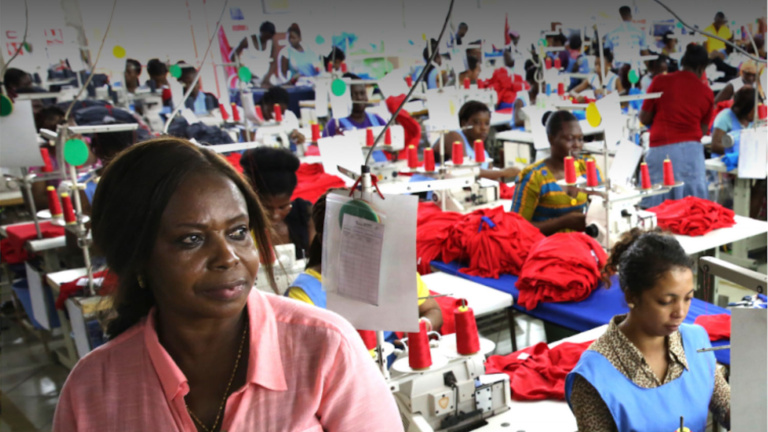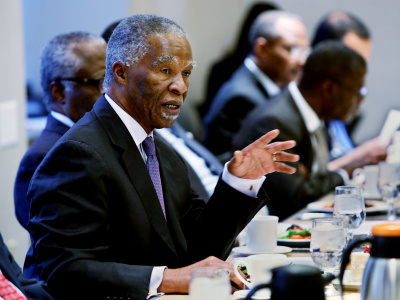
DFIs’ commitment to mobilising private finance for the SDGs
Development finance institutions (DFIs) have been investing in the private sector in emerging and frontier markets for more than five decades. Now they have embarked on a decade-long campaign to scale up financing in sectors linked to the Sustainable Development Goals (SDGs) “from billions to trillions”. The author’s wish list features 5 top points that can secure the right combination of policies, strategies, and work on the ground.
A key theme in my work at the Association of European development finance institutions (DFIs) over the past year has been how innovative financing strategies can mobilise more private finance to achieve the Sustainable Development Goals (SDGs). These global goals for 2030 to fight poverty, create jobs and prevent climate change will require financial resources far beyond what governments and development banks can provide on their own.
Key role of DFIs
As DFIs we have demonstrated how publicly-backed investments in the private sector in emerging and frontier markets can have significant positive effects on investment, job creation and economic growth – cornerstones of the global goals. The 15 European DFIs that I represent have tripled their investments in poor countries to almost US$50bn over the past 10 years. Part of this growth has been made possible by capital injections from the governments that own the DFIs. But the DFI model has also proven that it is financially self-sustaining and can go hand-in-hand with a focus on low income countries. DFIs generally achieve modest but steady profits that allow them to grow year-after-year, while raising additional funding for their investments in the markets.
On top of their own investments, DFIs also already play a crucial role by mobilising private investors. They typically do this by providing risk capital to enterprises, that can then in turn raise additional funding from commercial financiers. DFIs also mobilise private investors by identifying investment opportunities and preparing transactions and structures that are ready for private investors to participate in.
Mobilisation of private co-financing is well on its way to becoming a cornerstone of modern global development policy. Donor governments across the OECD countries are studying the topic thoroughly and private sector partners are also exploring their potential role in achieving the SDGs through a series of international commissions and working groups.
Mobilisation is closely linked to blended finance – a catch-all description of transactions, where publicly-backed institutions, mandated to generate development impact, co-invest with financiers guided by commercial interests, that are looking to be rewarded for taking calculated risks in developing countries. The ‘big idea’ is that by making available publicly-backed capital to share risks with commercial investors, donors and DFIs can open the floodgates of investment into critical sectors such as financial services, sustainable energy and other critical infrastructure, as well as agribusiness.
This mobilisation is already happening at very significant scale. We have seen a tremendous growth in investment into emerging and frontier markets over the past two decades. But there is potential – and a great need – to do much more.
As large financial institutions, DFIs are sometimes compared to super tankers but unfairly so, in my view. It requires time to fine-tune the approach and DFIs already focus both on investing their own funds in valuable projects and on building relationships with private investors that can participate in these good deals. DFIs are aware of the need to mobilise as much total financing as possible in concert with private institutions. They know that they will have to build ever-closer relationships with private institutional investors and embrace innovative financing practices.
At the same time, DFIs are usually ‘policy-takers’, that is, they are bound by the policies set by governments and other standard-setters in the international community. As the emphasis on development finance for the private sector has grown in recent years, there has also been a surge in new policies and strategies in relation to individual bilateral and multilateral DFIs, as well as in the context of OECD and the EU. Decisions to optimise policies in one area – say, the rules for how to measure results and ensure sustainability of investments – can have great effects on outcomes in other areas, including on DFIs’ ability to mobilise private finance for development.
Top 5 recommendations
This brings me to the wish list, which highlights five areas, where the right policies and strategies can boost the mobilisation of private capital towards the SDGs and where the wrong ones can contribute to disappointing results over the crucial next 10 years. This wish list encompasses five key points:
1. Focus as much on project development as on financial structuring
In discussions about financing for the SDGs, there is a fascination with high leverage ratios and structures, where a small amount of development finance can unlock a large amount of commercial finance. As a result, the development of financial structures that provide such high-leverage solutions is gaining significant attention. Yet, we should keep in mind that the challenge of financing the SDGs is not simply one of financial liquidity, i.e. moving larger amounts of financing. The real challenge is to get the right mix of financing that supports the first hard steps taken by entrepreneurs as well as the last dollar needed to reach financial close.
In the marketplace for development finance the entrepreneurs always see a shortage of finance, whereas the financiers perceive a lack of bankable projects. A healthy competition for the deals as well as for the financing has expanded the investment universe year after year. It is not unreasonable to expect that DFIs can triple their own activity and private co-finance again over the next decade. But this cannot be done merely by increasing the supply of safe loans, where the private investors provide liquidity and donor agencies use their scarce resources to absorb the risk through ‘credit enhancement’. Risk capital (equity and quasi-equity) will also be required as part of the financing for new projects and value-added engagement with entrepreneurs to get them off the ground and to ensure that they build a robust capital structure allowing them to obtain the lower-risk senior loans.
The right mix of finance includes risk capital backed by manpower, experience and a long-term perspective. These ingredients can never be replaced by sophisticated financial structuring on its own.
2. Acknowledge both indirect and direct roles in mobilisation.
DFIs will need to track their mobilisation of private co-finance to show their full contribution towards the SDGs. There are different statistical methods for going about this.
One is to only count direct mobilisation, where a DFI syndicates a loan or sets up a fund with private investors and charges a fee proving its direct role. But this method misses the important role DFIs play in indirect mobilisation, where their investments unlock participation from other investors. The need to avoid double-counting when two or more DFIs invest in the same project makes it potentially more difficult to track indirect mobilisation. It is virtually impossible to demonstrate the role of a DFI in unlocking a private investment with perfect attribution. But ignoring the indirect mobilisation would introduce a bias against a type of investment that requires risk capital and is work intensive.
Direct mobilisation tends to be concentrated around larger investment in relatively safe assets, while indirect mobilisation involves risk capital that is work intensive and has a long-time horizon. Both types of mobilisation are necessary and one should not exclude the other.
3. Balance additionality with mobilisation from a long-term perspective
Development finance is used to achieve development outcomes. The DFI model aims to contribute to these outcomes by investing in projects with good commercial sustainability that also live up to high standards for environmental and social responsibility. The challenge for DFIs today is to go further than private investors in two respects: by investing in enterprises that involve too high commercial risk to be funded solely by the private market (high “additionality”), while mobilising more private co-financing.
A single investment can rarely achieve the highest additionality and leverage ratio of DFI to private sector co-finance at the same time. DFI portfolios usually contain a spectrum of investments that balance additionality and catalytic effect. An enterprise that is at an early stage when a DFI makes its first investment can grow to become more mature and amenable to private investment over time.
One of the key reasons that DFIs have had a high level of financial sustainability over the years is that their portfolios are well diversified. Private institutional investors are also looking for a degree of diversification in their investments, particularly when venturing into emerging markets, where they are less experienced. Some DFIs have begun to structure opportunities for private investors to participate in DFIs portfolios with an acceptable risk-return profile. Such partnerships can free up DFI financial resources for new investments and allow them more freedom to balance additionality and mobilisation in a way that produces the best outcomes on both measures over the long term.
4. Allow profit to go hand in hand with development outcomes
DFIs exist to provide access to risk finance but also to lead the way for private investors. They have a responsibility not to get in the way of private investors (often referred to as “crowding out”). One of the key ways of ensuring that private investors get a fair shot at financing projects in developing countries is to make sure that publicly supported investments in the private sector are made on market-oriented terms. Generally, this means that loans should be priced to reflect the risk of the client rather than the risk of the financing institution (which can in practice be zero for a government counting development finance as a fiscal expense). The track-record of DFI investments shows that projects that have made a good contribution to development outcomes are those that also have a good commercial sustainability.
There is usually not a conflict between development outcomes and profit. Development finance that is priced at a lower level to avoid making a profit also drives down the returns available to private institutional investors in the market. This is exactly the opposite of the basic recipe for the “billions to trillions” transformation. To avoid this scenario, development financiers need to safeguard the commitment to investing on market-oriented terms and contribute to the long-term health of the markets.
5. Set high and harmonised standards
Bilateral and multilateral DFIs maintain high standards for responsible financing. For example, bilateral DFIs in Europe have committed to a level playing field for high standards, such as environmental sustainability and respect for human rights. These harmonised standards help DFIs co-invest in projects and prevents a situation where a client seeks out DFIs that have lower requirements. Bilateral and multilateral DFIs collaborate to update and finetune these standards to make sure they can continue to lead the way in terms of corporate responsibility, impact reporting etc. However, individual DFIs are always pressured to adopt their own special requirements. Divergence increases the costs for clients. It can also make it harder for private institutional investors to work with DFIs and understand the differences in their approach. It will be much easier to scale up development finance that relies on standards and methods that are high and harmonised at the same time.
DFIs are up to the challenge
DFIs already play a crucial role both in originating investment opportunities and in mobilising private investors. I believe that we will have to get these things right to reach the ambitious goals set out for 2030. I’m also convinced that if we do get them right, we stand a much better chance of going “from billions to trillions” than many think possible today. Fulfilling these five top wishes would go a long way towards securing the right mix of policies and strategies combined with the hard work on the ground that can make it happen. DFIs are up for the challenge of scaling up total financing for the SDGs.
About the author
Søren Peter Andreasen is the General Manager of EDFI – the Association of European Development Finance Institutions.
Read the full magazine issue









